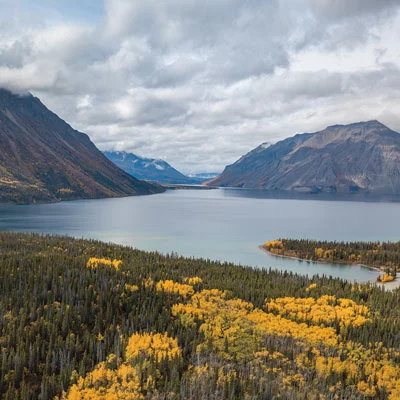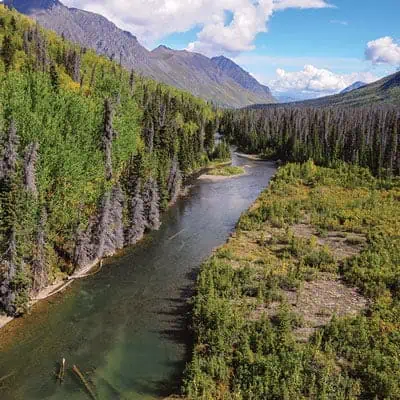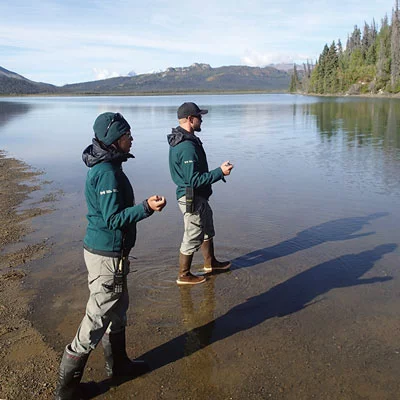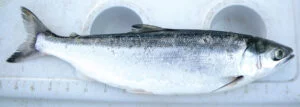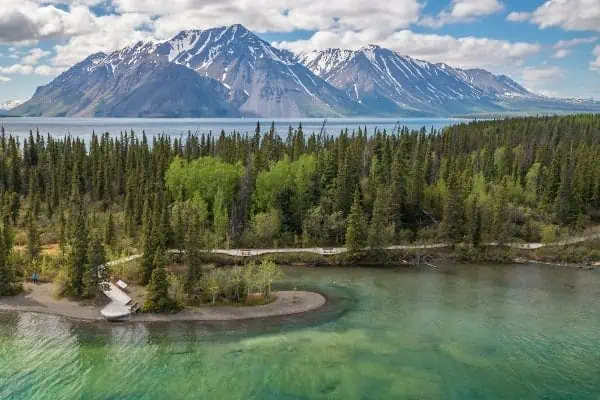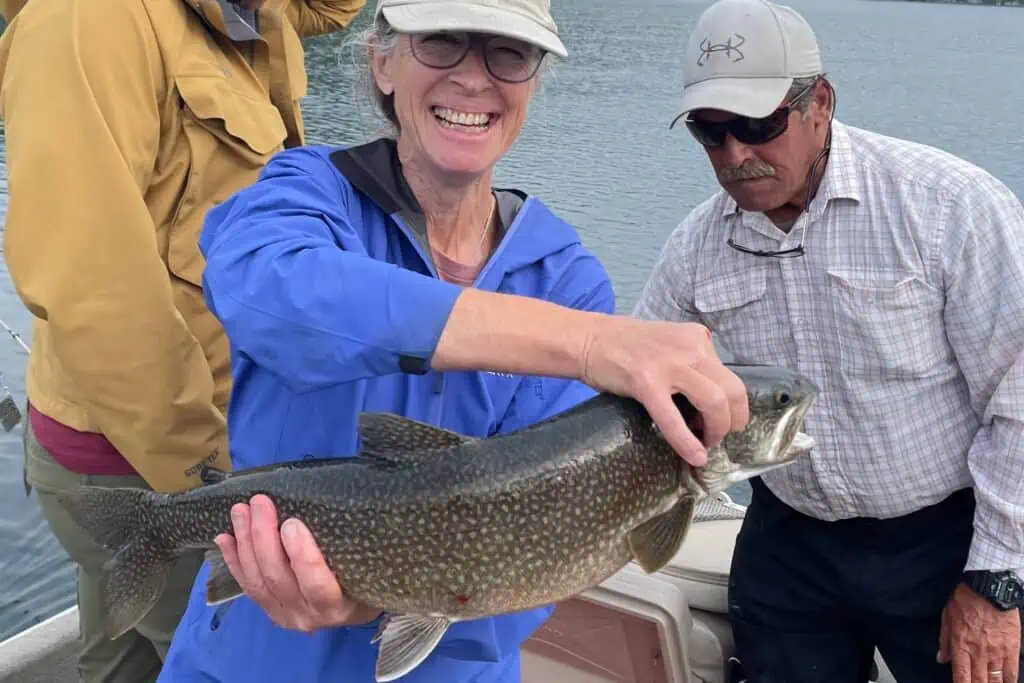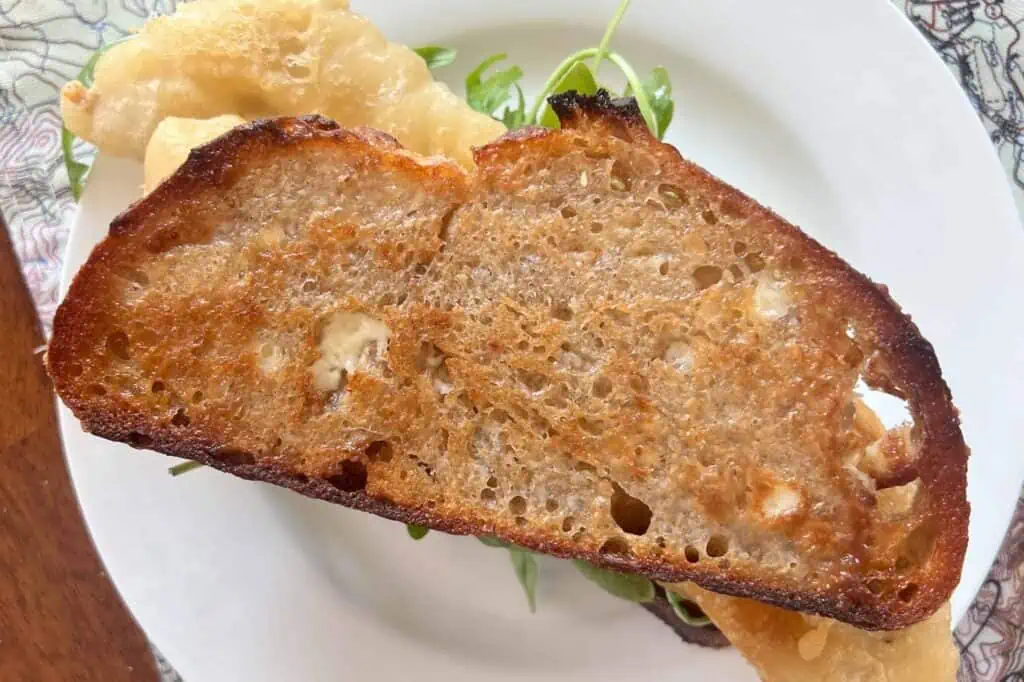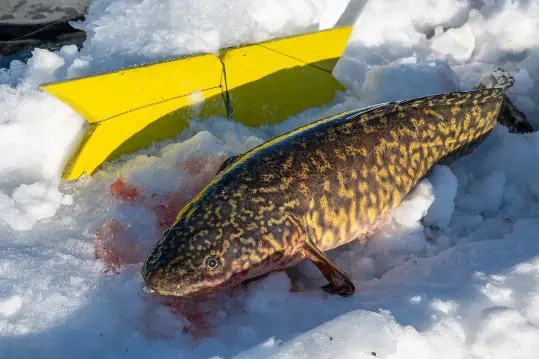Kluane National Park and Reserve protects the northernmost population of kokanee salmon in Canada. Kokanee are actually sockeye salmon (Oncorhynchus nerka) that became land-locked at some point in the past. In Kluane’s case, this likely occurred during a surge of the Lowell Glacier that blocked the salmon’s access to the ocean. Unable to return to the ocean, the salmon quickly adapted to a life without saltwater, evolving to complete their entire lifecycle within the Kathleen Lake system.
The kokanee population is an important component of the freshwater ecosystem in the park, acting as a source of food and nutrients. Every year since 1976, the park has monitored kokanee as they return to spawn in Sockeye Creek. Historically, the number of spawning kokanee has averaged over 3,000 fish, but in the early 2000s the population crashed. Only 730 were counted in 2002 and an all-time low of 20 were counted in 2009.
To help protect this vulnerable population, the park has banned possession of kokanee by recreational anglers since 2004 and asks anglers not to target kokanee. Although there were high population numbers in 2015 and 2016, recent counts have again been low and Parks Canada continues to be very cautious managing kokanee. Investigation into what may be causing these large population fluctuations is ongoing, and Parks Canada continues to monitor streamflow, water temperature, angler harvest and kokanee’s main predator, lake trout.
Here are three ways you can help kokanee:
1 – Follow Kluane National Park and Reserve fishing regulations:
Fishing licenses are available at the park visitor centre in the Da Kų Cultural Centre, Top Spot and Fas Gas in Haines Junction. Information is available at: parkscanada.ca/kluane.
2 – Know how to identify a kokanee:
Look for: Silver body, No spots, Short dorsal fin (compared to Arctic grayling), Deeply-forked tail
Know the difference between kokanee and other fish in the Kathleen Lake system:
Rainbow trout (catch and release only) – dark spots on light body; radiating rows of black spots on tail; shallow forked tail
Lake trout – light spots on dark body
Arctic grayling – long and high dorsal fin
If you don’t know, let it go!
3 – Follow best practices for live release.
Be prepared
Proper fishing gear avoids unnecessary prolonged fighting and fish exhaustion.
Handling time, physiological stress and physical injuries can be reduced if de-hooking tools are prepared and ready to go.
Use properly-sized barbless hooks with artificial lures or flies on an active line
Smaller hooks and organic or scented baits can be swallowed more easily and cause deep internal hooking injuries and bleeding.
It is illegal to leave a line unattended in Kluane National Park and Reserve.
Keep fish in the water
Plan ahead to remove hooks and take photos without removing fish from the water.
Keeping fish in the water minimizes oxygen deprivation, acute stress, skin abrasion, bruising and dropping injuries.
A fish’s mucous layer plays an important role in many functions, like lubrication and locomotion; avoid touching fish with dry hands or tools that can damage this layer.
Minimize barotrauma, a pressure-related injury caused by quickly bringing a fish from deep water to the surface
Use non-intrusive deep-release systems or avoid deep fishing.
Smaller fish are extremely vulnerable to barotrauma and suffer more injuries.
Don’t vent, deflate or “fizz” fish by squeezing their swim bladder.
Recovery can be efficient if a fish is returned to deeper depth in a timely manner.
So the next time you are getting ready for a tranquil day of casting or trolling in the park, school yourself, your friends and your family first on these key fish identification and handling tips. The kokanee salmon will thank you.

